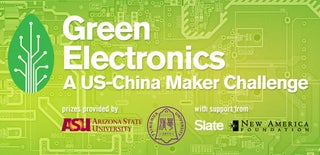Introduction: 600/300 Lumen Li-ion Camping Lamp
I couldn't find really powerful camping lantern on the market. Led lanterns have long working time, but light is not enough (for example) to cooking and uni directional. Fluorescent emergency lights are heavy, big and loosing charge while storing due to lead acid batteries.
Decided to build one :) ...
It should:
- be strong enough for wide area lighting
- not need special charger in field, car battery or solar panels should be enough to do the job
- have automatic charge system
- be dimmeable for power saving and long time operation
- have status display
- be robust and reliable
- have low discharge rate
- be not expensive ;)
Step 1: Parts 1
First, I search about charging circuits for do it myself but understood that buying as ready made is much more easy, cheap, quick and good in quality.
Found Hobbyking DC-4S balance charger. It has wide input voltage tolerance (9V-16V) and very small. It is around 30 watts and can charge four serial 18650 li-ion batteries (2300mAh each) in couple of hours...
Of course, I'm planning to use only circuit; not body of charger to reduce size.
Osram has very good 12V compact fluorescent lamp for caravans and boats. It has two power mode 11W (600 lumens) and 6W (approx. 300 lumens). When you restart lamp in 3 seconds, power mode changes automatically.
All other parts should be shaped around these main components...
Step 2: Parts 2
I searched local Bauhaus store in Istanbul and found this rainwater drainage pipe adapter from company "Marley".
It fits nicely to charge circuit and nearly no dead volume after installing all components. Material is UV stabilisated plastic and dark grey color. Perfect for lamp body :)
For lamp screen, I decided to use this toothbrush glass spare. Different glasses are possible but this one not need any sand blasting for diffusing light and has thick walls for robustness. It fits inside of pipe adapter; just 1mm smaller...
Other requirements are:
- Small 1.0mm aluminium sheet
- Li-Ion batteries (from old laptop battery pack, not used)
- E27 bulb socket
- Main on off switch
- Power check pushbutton switch
- 12V 5A small relay to isolate batteries from charger
- Some sort of cables and 4S connector
- Stainless screws etc
Step 3: Designing and Manufacturing Process I
Than I designed all lantern parts on computer. Lamp designed as two main components, lamp housing and inner equipments.
You can see inner part as full 3D view and exploded views here...
We need two aluminum sheet parts. Here you can see my method to produce them manually.
I cut paper templates and glue them on some scrap aluminum sheet. Then cut them with oscillating saw manually by following lines.
Removed paper templates with protective film, file and bend as required.
Here you can see some parts from inside.
Step 4: Manufacturing Process II
I fixed display screen to base with transparent tape.
To drill installation and charge holes precisely on body, prepared a paper template and wrap it around it.
Then drilled them with Dremel tool.
Here you can find simple cabling schematic for electronics...
Step 5: Testing
Now parts are installed together and testing.
It is working perfect! :))
Step 6: Finished :D
Yesss finished! :)
Here are specs:
- 3.5 hours operating time (tested!) on 11W (600 lumens), approximately 7 hours on 6W low power mode
- Can be charged with car battery or any 9-16V adapter or solar panel (min 20W recommended)
- Digital charge level display
- Base diameter 92mm, height 180mm
Total weight is 620 grams
Automatic charge control, visual and audible signals
Low discharge rate with Li- Ion batteries
Cost of materials around 40 usd
The joy of succeed: Priceless :)))
Step 7: Update!
After using couple of time, I had problems about overdischarging of batteries.
In original circuit, there is not anything to handle this problem. I added simple 18650 li ion battery protecting circuit any of four serial batteries.
Such as:
http://www.dx.com/p/charge-discharge-protective-ci...
This kind of circuits must be reactivated by connecting battery and circuit negatives temporarily when activated.
I have been added second small push button to "reset" when batteries over discharged mistakenly ...
Now our project is much more better, at least for health of Li-ion batteries :)

Participated in the
Green Design Contest

Participated in the
Green Electronics Challenge

Participated in the
Battery Powered Contest












